Features of fuel briquettes
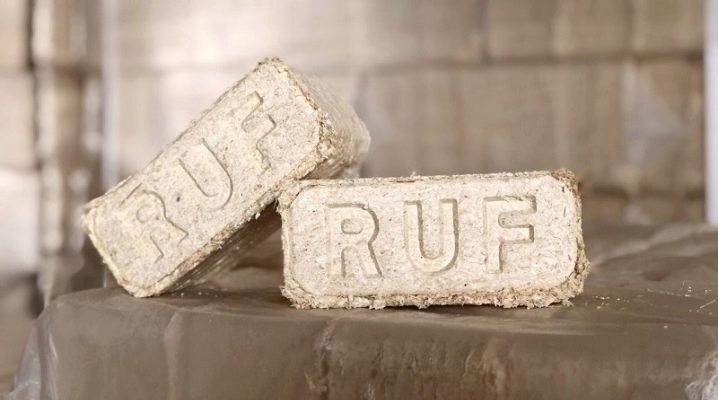
Briquettes from pressed sawdust represent one of the options for solid fuel, a modern alternative to the usual firewood and coal. Due to their geometric shape and identical dimensions, they are sometimes referred to as eurowood. In our review, we will tell you more about the advantages and disadvantages of such briquettes, as well as give advice on choosing the best products.

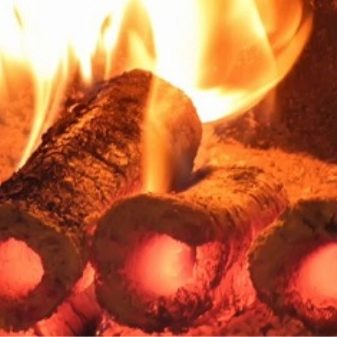
What it is?
The solution to the problem of heating houses in the cold season uses several radically different technologies. For densely populated cities and large metropolitan areas, the most practical choice is the arrangement of a centralized heating system, when heat from fuel burned in a special boiler room is supplied to houses and apartments through pipes through a coolant, usually water. Suburban private houses and cottages are most often connected to a source of electrical energy or a gas main. For rural areas, almost the only way out is to use firewood. In recent years, the usual wood has acquired a serious competitor - fuel briquettes.
Briquettes for heating have a high calorific value, they are easier to transport, and much more convenient to place them in storage. To light the stove with Euro wood, you do not have to purchase specialized equipment or consumable raw materials, the process "from" and "to" follows the standard scheme. All this makes briquettes a very practical and economical fuel for ovens.
By the way, you can also use such briquettes for lighting when cooking kebabs and barbecues.
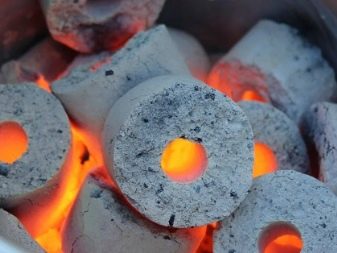
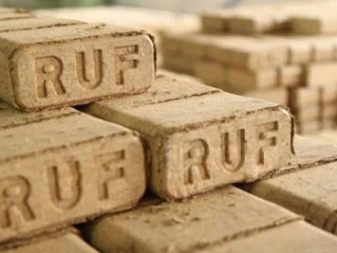
Advantages and disadvantages
The advantages of the new fuel are fully revealed when compared with standard firewood.
- Exceptional heating value. During combustion, compressed sawdust emit two to three times more heat energy per unit mass.
- Long burning time. In comparison with the usual wood, the service life of the briquette is 1.5, or even 2 times longer, which, together with the first advantage, allows you to achieve significant savings on the organization of heating.
- Environmental friendliness. When creating briquettes, no chemical components are used. They do not emit toxic substances and do not cause negative reactions from the human body.
- Reduced resin production. When using briquettes, the chimney has to be cleaned twice less often than when kindling with simple firewood.
- Low noise and smoke emission. Briquettes from plant waste burn out evenly, little smoke is emitted during their incineration, and very little ash remains.
- Ease of storage and use. The shape and size of eurodroves allows you to spend a minimum of space on their storage.
- High density. This means that with an equal volume, the weight of the briquettes will be approximately 3 times the weight of the firewood.
- Reduced moisture content. The moisture index of eurodrops on the basis corresponds to 10%. For comparison: for dry firewood, it is kept at a level of 20 to 25%.
Briquettes have a reduced concentration of useless water, respectively, less thermal energy is spent on its evaporation.
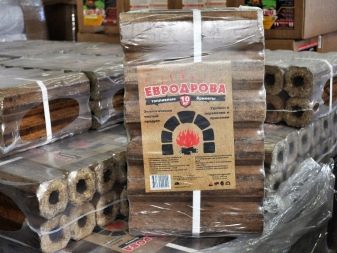
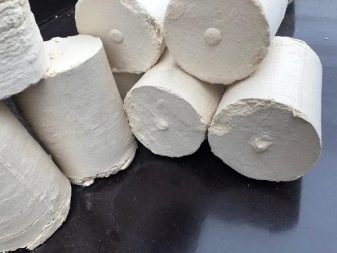
However, it was not without its drawbacks.
- Relatively high price. The purchase of sawdust in briquettes will cost much more than the corresponding volume of firewood.
- Deterioration of combustion on contact with moisture. That is why, during storage, it is important to ensure full protection of the fuel from moisture dampness. Limited period of use. Usually, manufacturers indicate a shelf life of 1.5-2 years. During this period, the fuel must be used.
- Accessibility difficulties. In a number of regions, compacted sawdust is not used as a solid fuel due to the lack of a supplier.
- Fragility. Evrodrova cannot be called durable in any way. In case of mechanical stress, they begin to crumble, especially low-quality products.
- Ash smell. The ash from the burnt fuel has a specific smell.
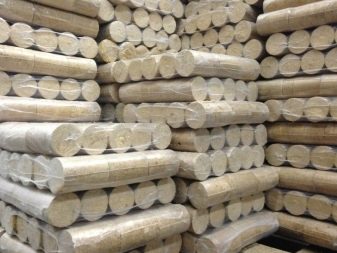
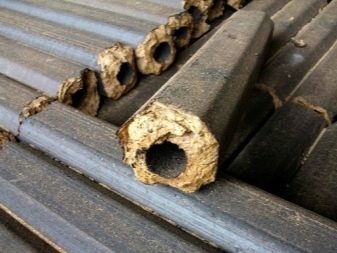
Nuances of production
In the production of fuel briquettes, plant raw materials are pressed. For this purpose, increased pressure is exerted on it, as a result of which the release of lignin begins. This component acts as the main binder. Thus, when forming briquettes, no additional chemicals are used, and this makes Eurowood 100% environmentally friendly.
Making briquettes at home is difficult. The release of lignin is the result of high pressure on the feedstock - it is quite laborious to ensure that this condition is met on homemade equipment, therefore, in such cases, binding components have to be introduced into the feedstock base. Clay is most often used as the latter, as well as wallpaper glue, less often soaked paper or cardboard is used.

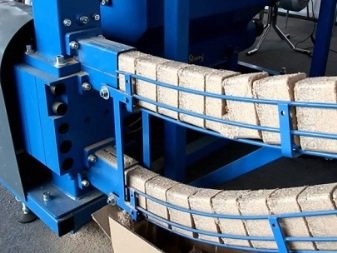
The most effective eurowood produced by an industrial method. The line for their production includes a group of machines:
- crusher;
- Dryer;
- powerful press.
At the initial stage of production, the raw materials are cleaned of impurities - the material is sieved, and then metal particles are removed from it using powerful magnets. Then the raw material is transferred to the crusher, where it is crushed to a homogeneous consistency. From there, the material enters the dryer, where all excess water is removed so that the moisture level does not exceed 8-12%. The crushed and dried mass goes along the screw to the molding press and from there completely finished briquettes come out.
The production uses hydraulic and screw presses. The former create a force in the range of 350-600 bar, the latter up to 900-1000 bar. As a result, solid blocks for the firebox are obtained, they are packed and delivered to retail outlets.
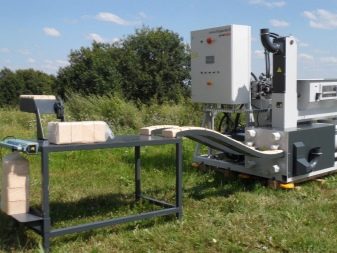
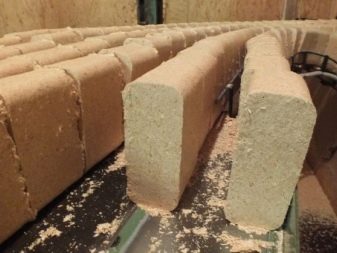
Views
There are many types of fuel briquettes.
By material
Woodburners are made from sawdust, hay, leaves, as well as sunflower husks, rice husks and buckwheat. For the manufacture of briquettes, you can take peat and coal dust. The type of raw material affects the characteristics of the calorific value of the fuel, the ash content, the amount of soot released, as well as the productivity and quality of combustion.
- Husk of sunflower seeds. Eurowood from pome husk has the maximum thermal conductivity - 5151 kcal / kg. This is due to their reduced ash content (2.8-3.6%) and the presence of oil in the fuel structure, which burns easily and therefore has a certain energy value. At the same time, due to the oil components, such briquettes quickly pollute the chimney ducts with soot, which leads to the need for regular cleaning.
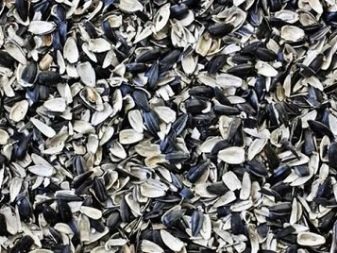

- Wood. This material holds the second place in terms of caloric content - 5043 kcal / kg at 5% humidity and 4341 kcal / kg at a relative humidity of 10%. The ash content of such Eurowoods corresponds to natural wood - 0.7-2.7%.
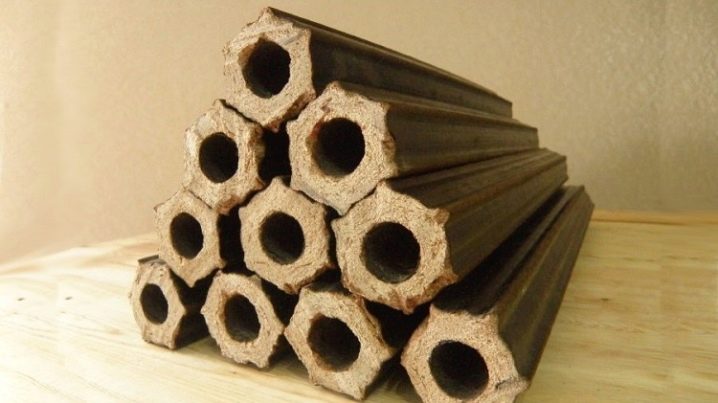
- Straw. Fuel from compressed straw is slightly inferior to sunflower husk and sawdust, they are distinguished by a high potential for use. At the same time, the caloric content is lower - 4097-4740 kcal / kg, and the ash content is very high - 4.5-7.6%.
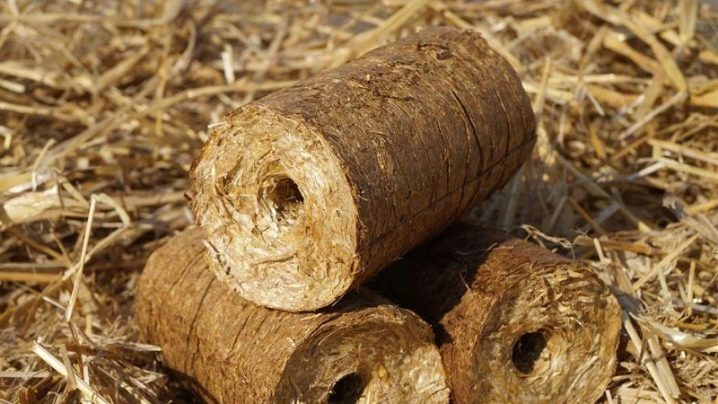
- Tyrsa. This material is essentially a herbaceous perennial. These briquettes are distinguished by low ash content - 0.8% and productive heat transfer at around 4400 kcal / kg.
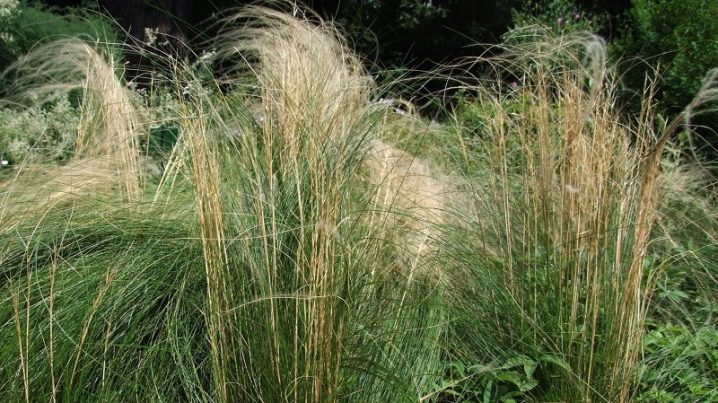
- Rice husks. Rice fuel has a maximum ash content of 20% and a rather low calorific value - 3458 kcal / kg. This indicator is even lower than that of a tree, while the humidity corresponds to 20%.
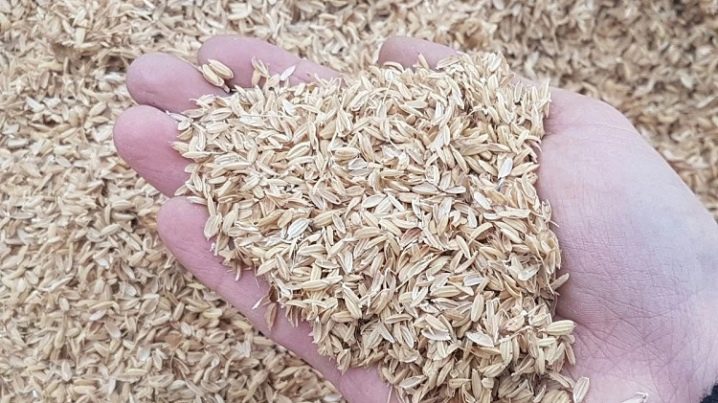
- There are also peat briquettes. It is a separate form, unlike all others. Such a fuel is distinguished by high ash content, it contains toxic impurities, therefore it is not recommended to use them in domestic conditions.
These briquettes are optimal for industrial furnaces as well as boilers operating on low quality fuels.
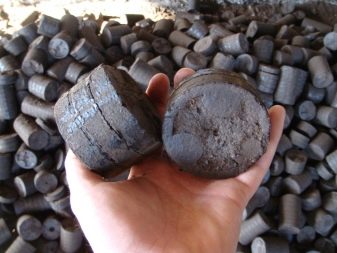

By form
There are several types of compressed fuel available on the market.
- RUF - these briquettes are prepared from dry sawdust by pressing under high pressure. In their configuration, they resemble brick, shade - from dark woody to straw, almost white. On the outside and back of the briquettes, the RUF designation is embossed. Such bricks are easily loaded into the combustion unit, moisture is not dangerous for them.


- Pini kay - the most expensive type of solid fuel based on sawdust. Users call such briquettes "pencils" because of their peculiar octahedron shape. Through perforation in the center of the Euro wood provides enhanced traction, which significantly increases their calorific value.
The blanks are fired during production, making them dry, hard and brown.
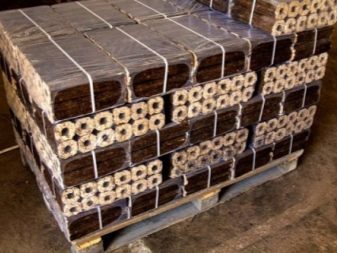
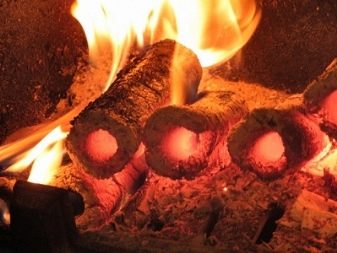
- Fuel briquettes in granules are produced less often. As a rule, they are in demand to light the stove, and in order to heat it, they use larger Euro wood.
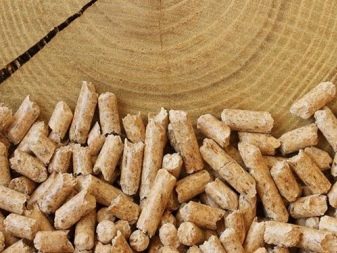
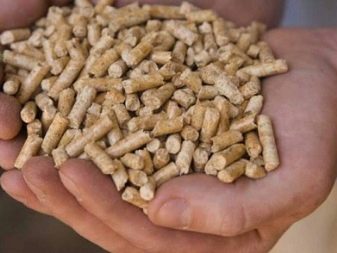
The variety of briquettes presented in the segment makes it difficult to choose a separate model. When selecting a productive fuel, it is worth adhering to the following recommendations. Prefer products made from straw and sawdust. In terms of burning power, they are close to traditional firewood, they burn out easily, have a reduced ash content and increased heat transfer. Briquettes from husk seeds will also give a large amount of heat, but due to the presence of oil, they heavily pollute heating communications with soot. The calorific value of Eurowood made of coniferous and deciduous wood is the same, since they are based on the same natural component. However, coniferous fuels contain tar, which contributes to soot contamination of the chimney.
Prefer briquettes with the highest density. The higher the density level, the more uniform and prolonged the fuel burnout. Such materials will not crumble and will leave many glowing, long-lasting embers. Test samples in several places before purchasing large quantities of Eurowood. Make sure of their strength: if the briquette breaks easily and begins to crumble in your hands, it means that it is poorly compressed, or contains a large percentage of moisture. Burn everything in the stove, look at the heat and the degree of draft. The weaker the draft at which the burning of the briquettes is maintained, the better.


Popular manufacturers
The Cherepovetsles company is recognized as one of the leaders of the domestic market of fuel briquettes, its products are manufactured under the NIELSEN brand on the basis of the advanced equipment of the C. F. Nielsen enterprise (Denmark), recognized as one of the world's leading manufacturers of eurodrops. The briquette plant is located in an ecologically clean area, on the shores of the White Lake. The production is carried out in compliance with all basic sanitary standards. Capacities allow producing up to 12 thousand fuel briquettes annually.
Other popular manufacturers include:
- Brick;
- Bryansk Plywood Mill;
- Good Wood;
- New Resource;
- Rufkom;
- Smolensk Dock;
- Solik;
- Technoflex;
- Alteza;
- Volforest;
- Linwood.
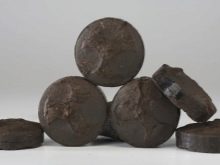
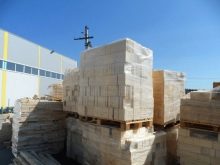

How to use it correctly?
The specificity of using Eurowood is that it is almost completely identical to the use of wood logs. Absolutely any type of heating installation is allowed - be it an ordinary stove, air heater, as well as a water boiler. At the same time, the heating period for brick stoves and fireplaces cannot be longer than two hours, otherwise there is a great risk that the masonry will begin to collapse.
Fuel products based on wood raw materials give a significant number of particles that settle during burning on the walls of the chimney, so you will have to clean the pipe a little more often. If you leave the compressed blocks in a smoldering form, then you can maintain heating in the room for 10-12 hours from a single bookmark.
At the same time, it must be borne in mind that the pollution of the chimney will be even stronger.
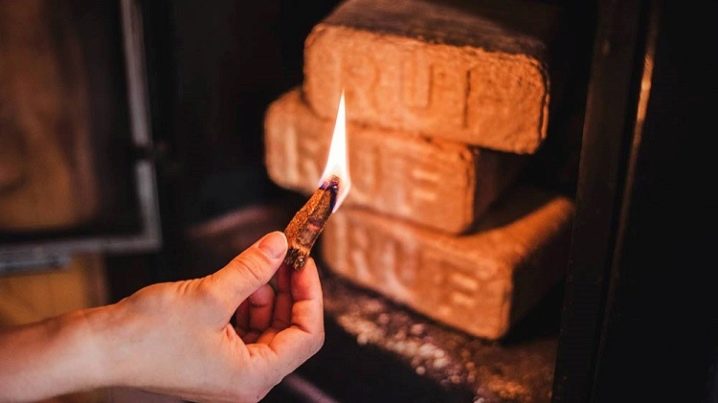
Storage rules
Due to differences in the technological process and characteristics of the feedstock, all solid fuels differ in their level of resistance to adverse environmental influences. In the most general form, the conditions suitable for their storage can be described as follows:
- room temperature from +5 to +40 degrees;
- humidity level 40-80%;
- no open flame near sources;
- lack of exposure to direct sunlight;
- fuel must be reliably protected from moisture and acid-base environments.
If these requirements are met, Eurowoods will be able to maintain their performance during the entire service life under the guarantee.
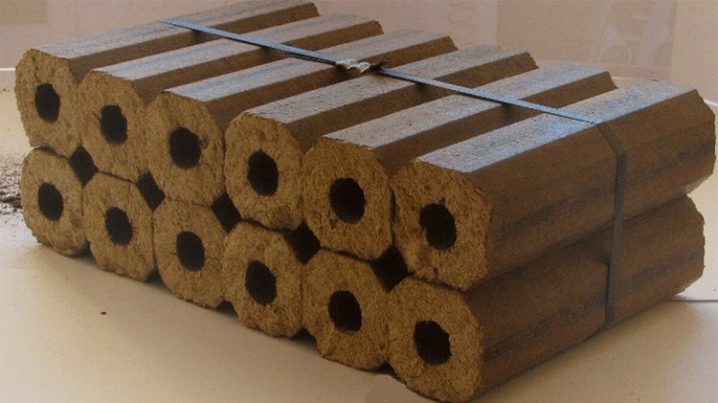













The comment was sent successfully.